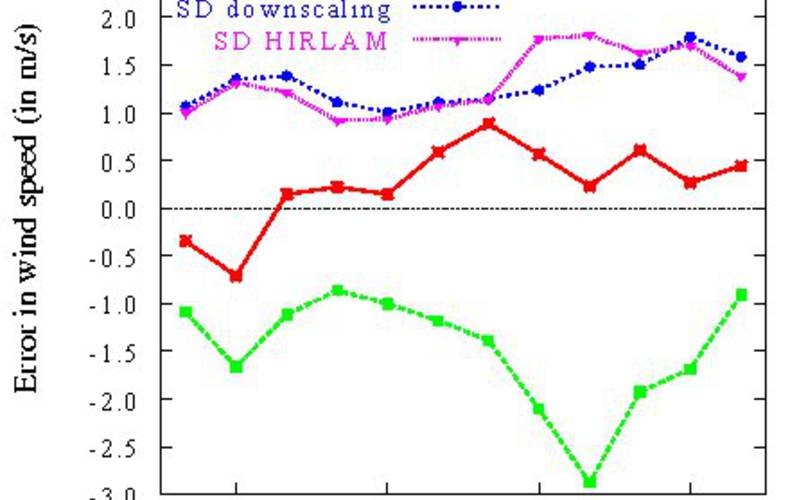
Although advancements in Numerical Weather Prediction (NWP) modeling have been substantial over the last decade, these models have not reached a state where clouds and precipitation can be resolved at the spatial and temporal resolutions needed for airport weather forecasts. Aviation forecasters compensate for these deficiencies using the model data in combination with detailed observation information regarding recent and current weather developments, and topographical information of the airport and its vicinity. In particular, the quality of very short-term forecasts, up to two hours ahead and provided in the form of TREND bulletins, highly depends on the availability of local and upstream observations.
AUTOTREND aims at the development of methods, which objectively integrate available observations and topographical information with existing NWP model data. The main purpose is to develop and implement the methods in an operational environment, and use them to provide detailed numerical guidance on changes in the local weather conditions, such as winds, visibility, clouds and precipitation, that are forecast to occur and that affect air traffic at civil airports in the Netherlands. Basically, two new methods have been developed and evaluated for this purpose, and they are used to produce 1) A numerical TREND guidance based on statistical and physical postprocessing of NWP model data and observations, and 2) A high-resolution spatial wind forecast based on refining grid-box averaged NWP model winds to local values.
AJM Jacobs, N Maat. AUTOTREND - Automated guidance for short-term aviation weather forecasts
Conference: 11th Conference on Aviation, Range and Aerospace M, Organisation: American Meteorological Societ, Place: Hyannis, MA, USA, First page: 0, Last page: 0